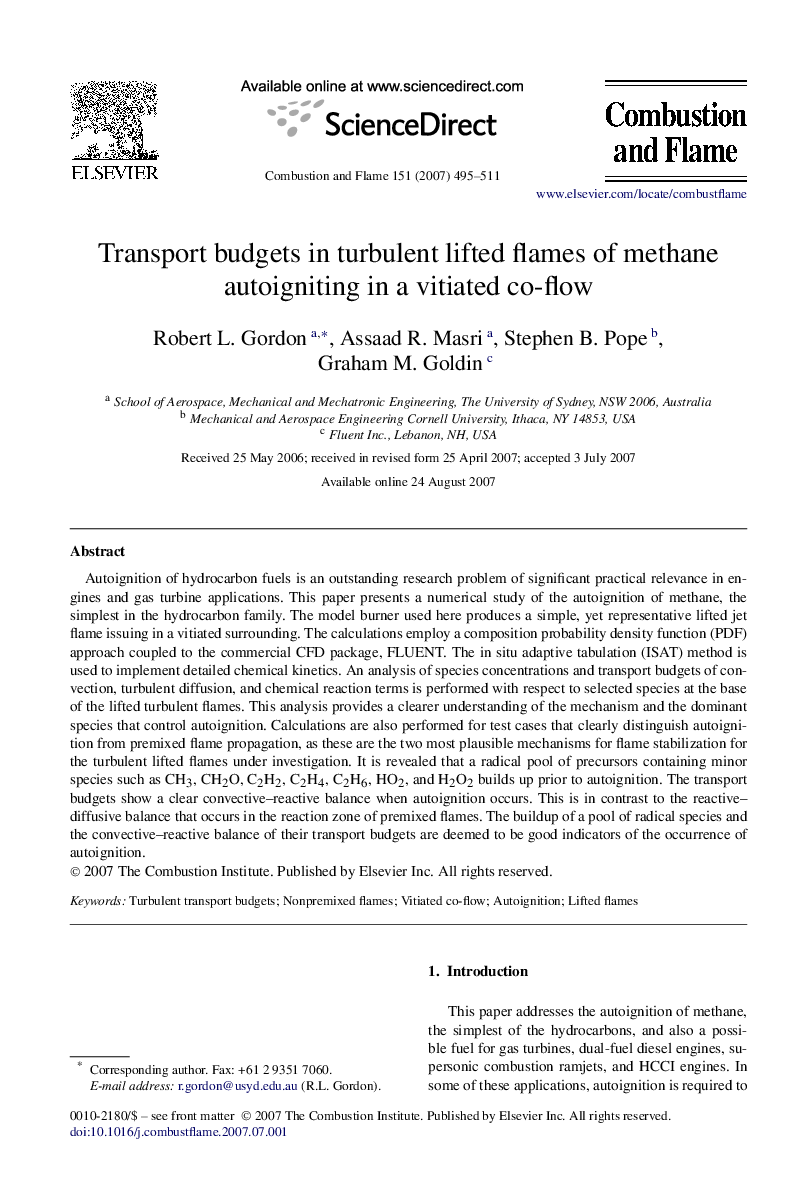| Article ID | Journal | Published Year | Pages | File Type |
|---|---|---|---|---|
| 169618 | Combustion and Flame | 2007 | 17 Pages |
Autoignition of hydrocarbon fuels is an outstanding research problem of significant practical relevance in engines and gas turbine applications. This paper presents a numerical study of the autoignition of methane, the simplest in the hydrocarbon family. The model burner used here produces a simple, yet representative lifted jet flame issuing in a vitiated surrounding. The calculations employ a composition probability density function (PDF) approach coupled to the commercial CFD package, FLUENT. The in situ adaptive tabulation (ISAT) method is used to implement detailed chemical kinetics. An analysis of species concentrations and transport budgets of convection, turbulent diffusion, and chemical reaction terms is performed with respect to selected species at the base of the lifted turbulent flames. This analysis provides a clearer understanding of the mechanism and the dominant species that control autoignition. Calculations are also performed for test cases that clearly distinguish autoignition from premixed flame propagation, as these are the two most plausible mechanisms for flame stabilization for the turbulent lifted flames under investigation. It is revealed that a radical pool of precursors containing minor species such as CH3, CH2O, C2H2, C2H4, C2H6, HO2, and H2O2 builds up prior to autoignition. The transport budgets show a clear convective–reactive balance when autoignition occurs. This is in contrast to the reactive–diffusive balance that occurs in the reaction zone of premixed flames. The buildup of a pool of radical species and the convective–reactive balance of their transport budgets are deemed to be good indicators of the occurrence of autoignition.
